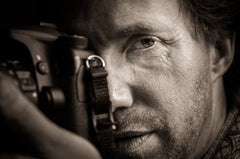Stephane Cojot

I love two things: people and colours. That's what I explore in my photographic work.
I was trained in film at the Louis Lumiere School in Paris and went on to work in Hollywood mostly doing visual effects and creating artwork on the side. In 2005 I got an MBA from Columbia and went on to learn about finance and economics working in London. I was doing portrait photography on the side. I then. . . Show More >

I love two things: people and colours. That's what I explore in my photographic work.
I was trained in film at the Louis Lumiere School in Paris and went on to work in Hollywood mostly doing visual effects and creating artwork on the side. In 2005 I got an MBA from Columbia and went on to learn about finance and economics working in London. I was doing portrait photography on the side. I then decided to go for a two-year world trip and upon my return had to be treated for leukaemia. In 2013, I release my first photo book called "Mapless, around the world in 800 days". At the same time, I started working full time on my art and creative work.
I began exploring abstract photography in 1995 with the "Windows of Light" series printed on Cibachrome. Five more series followed which led me to rethink my approach to abstract photography in a different format and a new finish. The result is my new series "Abstract Atlas of the World", a suite of visual sensations and sensory landscapes that are based on my understanding or misunderstanding of the world. It is the expression of my unique feelings about shapes and colours around us. My images are never modified in Photoshop and each represents something real that existed at least optically. I often draw from my training in film and visual effects, using filters and multiple exposures to create them.
These images are like open windows designed to capture the invisible of my emotions and my feelings of a wanderer. It is also a reflection of my dream of a world without borders where people move freely and free of the clichés associated with nationalities.
The large-format, inspired by Cinemascope, is designed to enhance the photographic immersion.
Colours and shapes are a separate, universal language and my work has been influenced by artists such as Turner, Olitski, Rothko or Chu Teh Chun.
< Show Less










